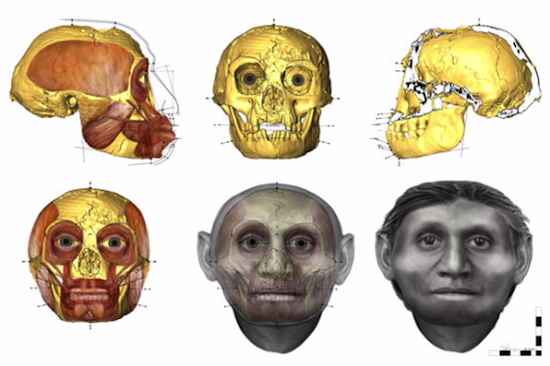Facial Reconstruction of Prehistoric Hominid Dubbed “Hobbit” Revealed
The Australian Archeological Conference, hosted by the University of Wollongong, is in full swing this week with most of the event’s buzz generated by the unveiling of the prehistoric hominid Homo floresiensis’ true face — or at least our best guess, made possible thanks to the facial reconstruction done by specialist facial anthropologist, Dr Susan Hayes. Playfully dubbed “Hobbit,” this prehistoric hominid stood roughly three and a half feet tall, much like it’s fantasy namesake. Not only does Homo floresiensis show that there’s still so much we don’t know about the history of human evolution, but also that our prehistoric past was a lot like Middle Earth as described by J.R.R. Tolkien. Which, let’s face it, is all we’ve ever really wanted.
Initially discovered in Flores, Indonesia in 2003 by the archeological team of Professor Mike Morwood and Liang Bua, the diminutive homo floresiensis inhabited the island roughly 95,000 to 17,000 years ago. We can safely assume that these creatures most likely lived in comfy little dwellings in the hills and avoided wizards soliciting that they accompany them on dangerous adventures.
The big reveal was a precursor to the Australian Archeological Conference, and provided a test to Hayes’ skills reconstructing facial structures. Going solely by the shape and form of Homo floresiensis’ skull and the location of soft facial tissue, Hayes’ work revealed an approximation of the female specimen’s face, but on that she said didn’t come together easily:
She’s taken me a bit longer than I’d anticipated, has caused more than a few headaches along the way, but I’m pleased with both the methodological development and the final results.
While we’re glad we now have a clear face to put to this so-called “hobbit,” what we really want to see now is the discovery of some fossilized orc remains. Believe us, they’re out there somewhere.
(University of Wollongong via The Verge, image via University of Wollongong)
- Cavemen were better at drawing four-legged animals, modern man hangs head in shame
- Earliest known dinosaur — or closest evolutionary relative — discovered
- Earthbound dinosaur hunted like modern leopards, dined on early birds
Have a tip we should know? [email protected]
